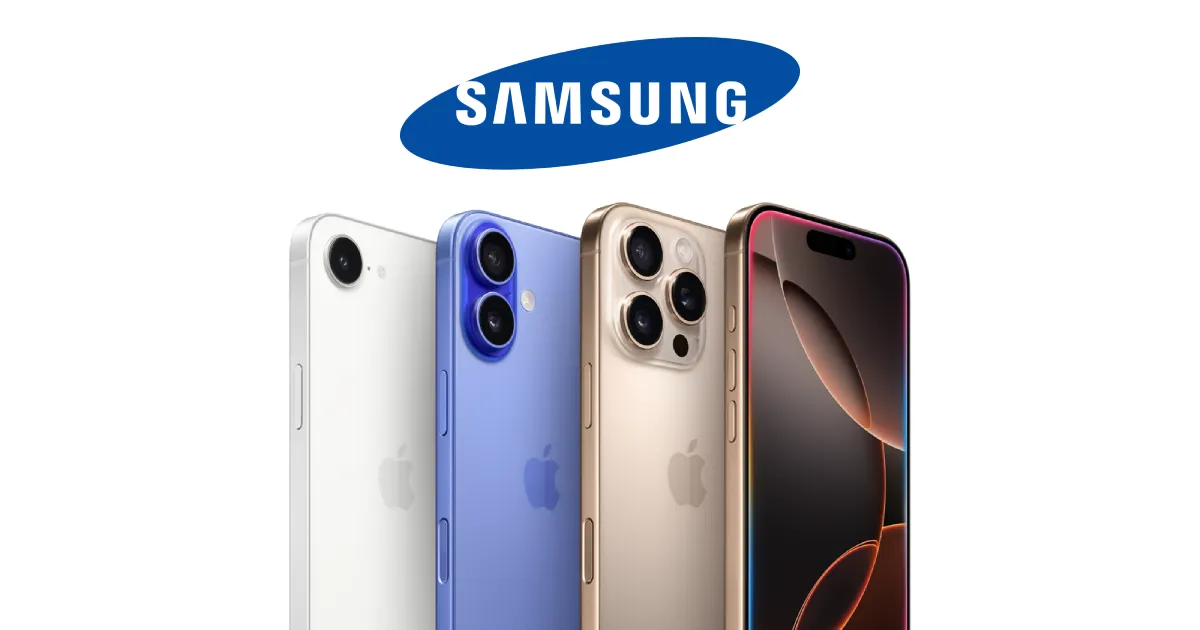Apple partners with Samsung to make iPhone camera chips in Texas

In a strategic move that signals a shift in the balance of power in the smartphone camera industry, Apple has announced a new partnership with Samsung to develop groundbreaking chip technology at Samsung’s Texas plant. According to a report by The Financial Times, the collaboration will focus on producing cutting-edge image sensors for future iPhones—an area long dominated by Sony.
A New Era in iPhone Camera Technology
At the heart of this initiative is an "innovative new technology for making chips," specifically three-layer stacked image sensors. These advanced sensors promise to dramatically improve camera performance on iPhones, enabling ultra-fast shooting speeds, support for high-frame-rate 8K video, and significant reductions in rolling shutter distortion—often referred to as the “jello effect” in smartphone videos.
This move could position Apple to deliver significant upgrades in imaging capabilities with its next-generation iPhones, potentially outpacing rivals and setting a new standard in mobile photography and videography.
Samsung: Back in Apple’s Good Graces?
Apple’s renewed collaboration with Samsung marks a significant thawing in a relationship that had cooled over the past decade. Apple began phasing out Samsung as a key chip supplier in 2011 in favor of Taiwan's TSMC, dealing a major blow to Samsung’s semiconductor foundry business.
However, Samsung has recently been making a comeback. The South Korean tech giant not only secured a $16.5 billion chip-making deal with Tesla but now finds itself once again in Apple’s supplier chain. One likely factor behind Samsung’s renewed appeal is its U.S.-based chip manufacturing, which offers an edge amid rising geopolitical tensions and looming tariffs.
Tariffs and the Shifting Supply Chain Landscape
Just yesterday, former President Donald Trump proposed tariffs of up to 100% on foreign-manufactured chips, sending shockwaves through the tech industry. Companies like Samsung, TSMC (which also operates in the U.S.), and SK Hynix are expected to escape these import taxes thanks to their American manufacturing presence.
In contrast, Sony may be at a disadvantage. Its image sensors are built under contract by TSMC in Taiwan, and Sony lacks chip manufacturing facilities in the U.S.—a potential liability in the new tariff landscape.
Sony: The Longtime Leader Faces a Challenge
Sony currently controls around 45% of the $21.8 billion image sensor market, far ahead of Samsung’s 19% share. Its dominance has stemmed from a consistent lead in sensor innovation, including being first to market with key technologies like backside illumination and global shutter sensors.
Sony responded to the news of Apple’s new direction with a statement emphasizing its continued commitment to innovation:
“We remain confident that we are advanced in providing sensor technology to our customers, and we will focus on continuing further technological advancement through larger sensor size and density.”
Nonetheless, the timing is precarious for Sony. There have been internal discussions about spinning off its sensor division, though those plans were reportedly shelved due to uncertainty around U.S. trade policy.
What This Means for the Future
Apple's move to diversify its sensor supply chain could have far-reaching implications for the smartphone industry. If Samsung delivers on the promise of its three-layer stacked sensor technology, it could alter the competitive dynamics of not just iPhone cameras, but the broader image sensor market.
For Apple, the shift ensures a more secure and possibly more cost-effective supply chain—one that’s insulated from international trade tensions. For Sony, the message is clear: Apple is no longer a guaranteed customer, and innovation alone may not be enough in an increasingly politicized global market.
As competition intensifies, consumers could ultimately benefit from faster innovation and better camera performance across the board. The camera wars are heating up—and this time, Apple and Samsung are fighting on the same side.





